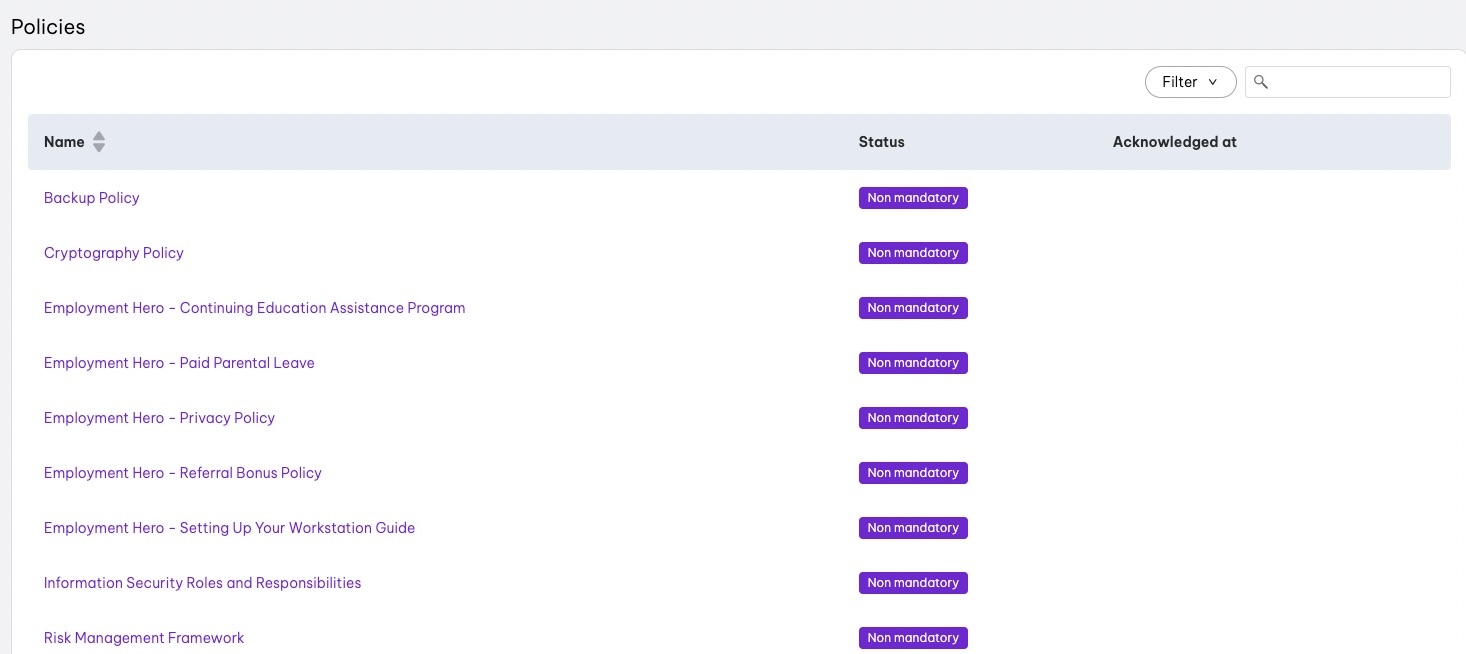
This little known benefit is on the rise, especially, according to Forbes, since the pandemic: sabbatical leave.
Historically, sabbatical leave has been rare outside of the academic world, yet businesses are starting to realise the benefits. Research shows that when employees take extended breaks from work, these sabbaticals can lead to “a decline in stress and an increase in psychological resources and overall wellbeing,” with positive changes often remaining long after.
McDonald’s was one of the first companies to offer a sabbatical leave programme back in 1977. Ten years ago, 25% of the companies on Fortune’s “Best Companies to Work For” list offered paid sabbaticals. Since then, the Society for Human Resource Management revealed that nearly 17% of all employers offered sabbaticals (both paid and unpaid) in 2017.
This uptake has no doubt been driven by catalysts such as the pandemic and subsequent Great Reset. Sabbaticals can be a very attractive benefit, helping employers to recruit and retain top talent. It’s no wonder – 62% of people in the UK have said they would take a sabbatical from work if it was an option.
So let’s look at exactly what a sabbatical is (and is not).
What is sabbatical leave?
Sabbatical leave is an extended period of time off away from work which can be paid or unpaid.
The word sabbatical comes from the Hebrew word “Shabbat”, meaning day of rest – which is where Sabbath originates from. Thus a sabbatical is a period of rest away from work. Sabbaticals are typically used for a specific purpose outside of work, such as travel, study, volunteer work, to spend time with family, or to complete a project.
Unlike paid time off, there is no statutory entitlement to sabbatical leave in the UK. Because there’s no specific entitlement, the conditions for taking a sabbatical must be individually agreed between the employer and employee.
However, employees may request a longer period of time off under flexible working rules (as amended by the Employment Relations (Flexible Working) Act 2023). Under the new rules, all employees have a right to make a flexible working request from day one, and can now make up to two requests every 12 months. This update has removed the requirement for an employee to have 26 weeks’ continuous service, so that now requesting flexible working is a ‘day-one’ right.
How long is a sabbatical?
There is no minimum sabbatical length. Indeed there’s no standard amount of time for a sabbatical. However, they typically last from four weeks to up to a year. Less than four weeks would normally be taken as annual leave, and if the sabbatical were to last longer than a year, this would more likely be viewed as a career break.
Curious? Here are some examples:
- Buffer offers a six week paid sabbatical after five years with the company.
- Deloitte offers a three to six month paid sabbatical for volunteering, or to work on personal or professional development at 40% of normal salary. What’s more, staff can take a one month unpaid sabbatical for any reason.
- PayPal offers a four week paid sabbatical for every five years of service.
- BrewDog’s main sabbatical programme offers four weeks of paid sabbatical after five years’ service. Interestingly, they also offer a “Dog Years” sabbatical programme which is one week off fully paid to welcome a new dog into the family.
- Tesco offers two versions of a sabbatical: the first is a ‘lifestyle break’ which gives employees up to three months off, unpaid. The second option is a ‘career break’ which is for periods between three months and five years.
- Patagonia offers a two month paid sabbatical to work with an environmental group of the employee’s choice.
Is a sabbatical the same as a career break?
Sabbaticals may be called career breaks but the legal ramifications are different, and the main consideration is whether or not the employment contract remains in place during the leave.
Unpaid leave is a broad term covering all types of leave without pay. The typical scenarios are:
- Additional leave where paid leave has been exhausted
- Sabbaticals
- Career breaks
- Emergencies
- Unpaid parental leave
- Time off work for public duties, such as jury duty
- Medical appointments
- Compassionate and bereavement leave
Unpaid leave generally applies to shorter periods of time than career breaks and, as with sabbaticals, the contract usually stays in place and the employee returns to the same job. Sabbaticals can be paid or unpaid, or paid a percentage of normal salary.
Career breaks are typically used for longer periods during which the employment contract is usually discontinued. A career break may be used when a parent doesn’t want to come back to work after parental leave has ended.

What is the difference between flexible working and a sabbatical?
Flexible working is about having more control over how, when, and where you get your work done. This means that flexible working adjustments focus on the day-to-day and could include part-time schedules, compressed hours, remote work options, or flexible start and finish times. These arrangements allow employees to structure their work around their lives, boosting morale and potentially increasing productivity.
On the other hand, sabbaticals are extended, typically unpaid, leaves of absence. They offer employees a significant break (months to a year or more) to recharge, travel, pursue personal projects, or volunteer. This can lead to a more refreshed and motivated workforce upon their return.
How does sabbatical leave work?
In the UK, employees can take sabbaticals in one of two ways: as paid or unpaid leave, or as a temporary break from employment. Either way, these should be governed by a sabbatical agreement.
Where employees make a flexible working request, the employer has a duty to consider requests fairly and can follow the Acas Code of Practice on flexible working requests.
Employers have the right to refuse flexible working requests on the basis of a specific business need. However, in the current climate, employers may be keen to agree to requests for unpaid sabbaticals due to the salary savings, and even as an alternative to making redundancies.
Where a sabbatical request is not made under flexible working legislation, it is up to the employer and employee to agree the terms.
A key legal issue that employers must address is what happens to the employment contract (including employee benefits and continuity of service) during the sabbatical.
If the sabbatical is to be paid, typically the contract remains in place, which also preserves the employee’s continuity of service. Unless the company has a specific policy regarding sabbatical leave, specific ongoing contractual terms must be negotiated between the parties, such as leave entitlement, benefits, and salary payments. During unpaid sabbatical leave, typically the contract of employment does not remain in place. However, the employer may agree to preserve continuity of service.
Why do employees choose to take a sabbatical?
If it’s not already clear why an employee might want to take a sabbatical, let’s break it down into three main themes:
Taking a break. With burnout and stress making headlines on the regular, an employee may simply want a break. Taking a sabbatical to recover or avoid burnout, or for rest, recuperation or refocus could be a great way to spend the time. According to one study of university professors, those who went on sabbatical experienced less stress at work upon their return.
Upskilling. Learning sabbaticals are all the rage, and for very good reasons. We already mentioned Deloitte and Buffer who offer paid sabbaticals for learning and career development opportunities. Deloitte and McKinsey, among others, sponsor employees to attend full-time MBA programmes after a certain length of service.
Life experience. Taking a sabbatical is a great opportunity to gain fulfilling life experiences, and come back to work wiser and more resilient. And besides, school isn’t the only time to learn, right?
In their book The 100-Year Life, Lynda Gratton and Andrew Scott argue that increased life expectancy will bring unprecedented challenges – challenges that we aren’t prepared for when our education is front-loaded in our early years. So taking time out to learn along the way is essential. Or better yet, let’s embrace and encourage lifelong learning and experimentation. Surely a great use of a sabbatical, we think.
How To Create a Standout Employee Experience
Is everyone entitled to sabbatical leave?
There are no specific employment laws giving the right to a sabbatical in the UK, although as we mentioned, the right to request flexible working may be used by employees to structure a sabbatical.
As there is no governing legislation, the terms of a sabbatical tend to be governed either by a company’s sabbatical policy, or by specific agreements between the employer and employee.
What are the benefits for employers in supporting sabbatical leave?
We already know the benefits that an extended break can provide for employees, from learning new skills, taking time out, or to focus on other projects. But what about benefits for employers?
At first, it might seem like a resourcing headache, plus a nightmare for payroll. And while we agree that business continuity is important, especially for small businesses, there are a number of benefits that sabbaticals can provide to employers.
- Improved employee retention – it’s a great benefit to offer, and employees tend to return from their sabbatical refreshed, energised and motivated. That’s a boost for retention, and also for productivity.
- Improved skills in the workplace – employees returning from a sabbatical are likely to have a wealth of skills and experience to share with their colleagues. These could be interpersonal skills, or specific to their role or team. Either way, we embrace cultures of learning. And if there are real barriers to learning or upskilling within your company, then releasing an employee to go on a sabbatical to gain skills elsewhere is a smart use of resources.
- Attracts top talent – sabbaticals aren’t the norm, and they aren’t often listed on company benefits. If you do have a policy on sabbatical leave, you’re likely to attract the best candidates in their field seeking a company offering flexibility.

Can an employer refuse a sabbatical?
Of course, there’s nothing to stop an employer refusing a request for sabbatical, or even a request for flexible working arrangements if there are specific business reasons which justify it (again, here’s our friendly reminder to follow the Acas Code of Practice on flexible working requests).
But before you go turning down those requests, bear in mind how it might benefit you as an employer. After all, flexible work arrangements are good for business.
We’re advocates for doing leave management right, but we know it’s not easy – especially for small businesses. Check out our guide to leave management for more tips.
And if you’re inspired to go up a level with the benefits you can offer and want to create a sabbatical leave policy – keep reading. We’ve got you covered.
Creating a sabbatical policy for your company
So let’s look at what goes into creating sabbatical policies.
And if you need a refresher on creating workplace policies, there’s no shame in that! Check out our guide here.
1. Create a clear policy.
Your policy should clearly set out what your employees need to know about taking a sabbatical. This will include details such as who is eligible for sabbatical leave, when they become eligible, how much time can be taken, how frequently, and whether or not it will be paid.
The policy is important because it creates clarity, which can help protect against misunderstandings which could lead to disputes and claims. Remember, part-time employees must be given the same consideration as full-time employees, and any selection criteria should not create an imbalance for those with other protected characteristics.
2. Create a request process.
Ideally this will sit alongside your existing leave request process so that line managers have visibility over leave requests. Proper leave management is important as it allows for consistency across the business for annual leave, sick leave, etc. It also reduces errors and increases productivity, satisfaction and retention levels.
3. Implement a clear system.
Whether this is already set up in your HR software or your HR team creates a new system, it will need to integrate with payroll to ensure that employee records are kept up to date. The system should address departure and return dates, points of contact, keep in touch arrangements, and benefits such as bonuses, holiday entitlement and pension contributions.
4. Talk about it!
The last step is to communicate your sabbatical policy. In this Great Reset era – which is now being exacerbated by the cost of living crisis – benefits like sabbaticals will set you apart from your competition and could be a defining part of your retention strategy. Flexibility is what workers are looking for, so don’t forget to shout about it in your EVP.
The wrap up
Whether you’re considering a sabbatical leave policy, being inundated by requests for flexible working arrangements, or even looking for ways to avoid redundancies, there are heaps of benefits for employers and employees alike when it comes to sabbaticals.
However you manage leave requests, having a solid HR system will make it a breeze for you. That’s what we’re here for, right?
Implementing company policies the easy way

We’re here to make your life, and your work, easy.
Keen to see what that looks like?
Guide to Choosing The Best HR Software




